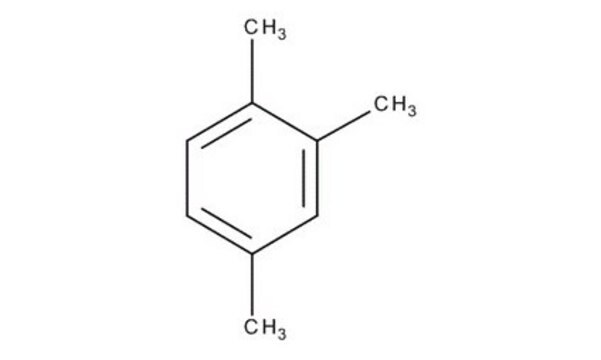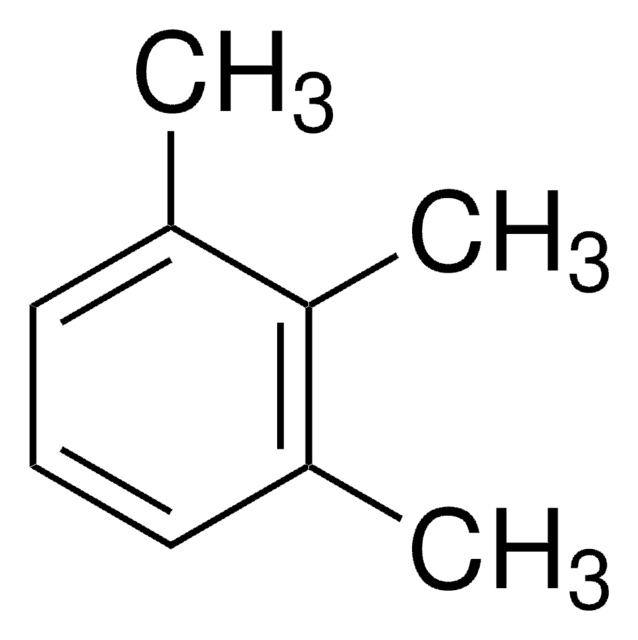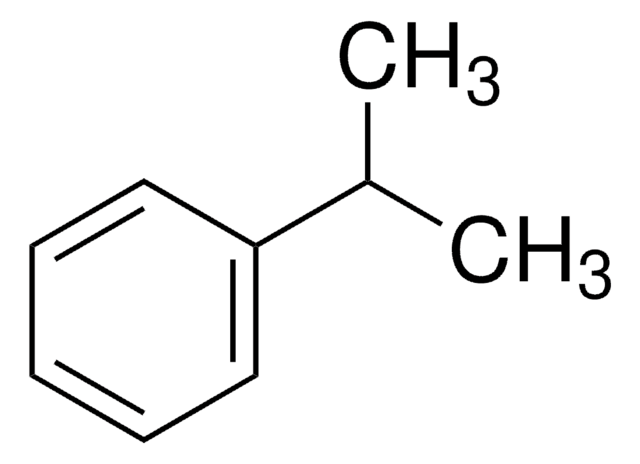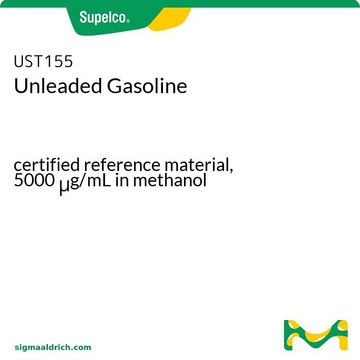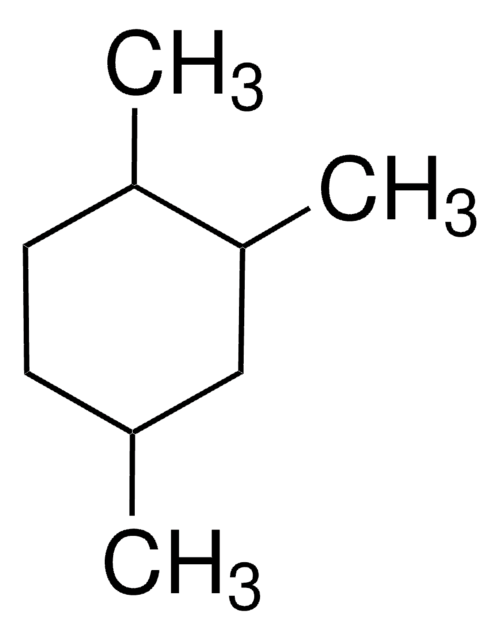T73601
1,2,4-Trimethylbenzol
98%
Synonym(e):
Pseudocumol
About This Item
Empfohlene Produkte
Dampfdichte
4.1 (vs air)
Dampfdruck
4.5 mmHg ( 37.7 °C)
Assay
98%
Selbstzündungstemp.
959 °F
Expl.-Gr.
6.4 %
Brechungsindex
n20/D 1.504 (lit.)
bp
168 °C (lit.)
mp (Schmelzpunkt)
−44 °C (lit.)
Dichte
0.876 g/mL at 20 °C (lit.)
SMILES String
Cc1ccc(C)c(C)c1
InChI
1S/C9H12/c1-7-4-5-8(2)9(3)6-7/h4-6H,1-3H3
InChIKey
GWHJZXXIDMPWGX-UHFFFAOYSA-N
Suchen Sie nach ähnlichen Produkten? Aufrufen Leitfaden zum Produktvergleich
Allgemeine Beschreibung
Anwendung
- 2,3,5-Trimethylbenzoquinone via oxidation reaction with phthaloyl peroxide under solvent-free conditions.
- 1,2,4,5-Tetramethylbenzene (durene) by methylation using syngas in the presence of Cu and Zn-based bifunctional catalysts.
- 1,2,4-Oxadiazole derivatives via tandem reaction with nitroalkenes and nitriles in the presence of superacid CF3SO3H (TfOH).
Signalwort
Danger
Gefahreneinstufungen
Acute Tox. 4 Inhalation - Aquatic Chronic 2 - Asp. Tox. 1 - Eye Irrit. 2 - Flam. Liq. 3 - Skin Irrit. 2 - STOT SE 3
Zielorgane
Respiratory system
Lagerklassenschlüssel
3 - Flammable liquids
WGK
WGK 2
Flammpunkt (°F)
118.4 °F - closed cup
Flammpunkt (°C)
48.0 °C - closed cup
Persönliche Schutzausrüstung
Eyeshields, Faceshields, Gloves, type ABEK (EN14387) respirator filter
Hier finden Sie alle aktuellen Versionen:
Besitzen Sie dieses Produkt bereits?
In der Dokumentenbibliothek finden Sie die Dokumentation zu den Produkten, die Sie kürzlich erworben haben.
Kunden haben sich ebenfalls angesehen
Unser Team von Wissenschaftlern verfügt über Erfahrung in allen Forschungsbereichen einschließlich Life Science, Materialwissenschaften, chemischer Synthese, Chromatographie, Analytik und vielen mehr..
Setzen Sie sich mit dem technischen Dienst in Verbindung.
